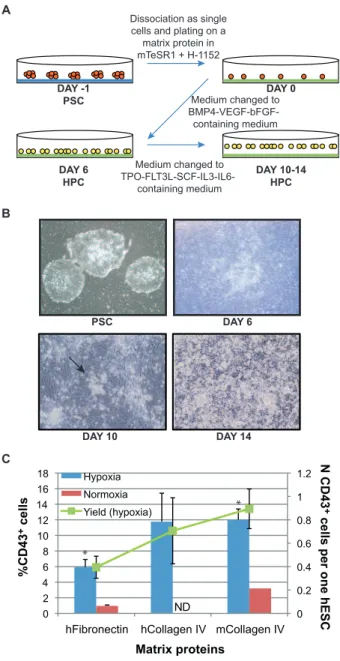A defined, feeder-free, serum-free system to generate in vitro hematopoietic progenitors and differentiated blood cells from hESCs and hiPSCs.
Texto
Imagem

Documentos relacionados
In this study we demonstrate that CD34 + cells derived from human embryonic stem cells (hESCs) have higher smooth muscle cell (SMC) potential than CD34 2 cells.. We report that from
Furthermore, we extended our study to include insulin-producing cells differentiated from human induced pluripotent stem (iPS) cells to establish a viral infection model of
There is other stem cell research that does not involve the destruction of a human embryo involving adult stem cells, amniotic stem cells and induced pluripotent stem
Isolation and characterization of mesenchymal stem cells from human umbilical cord blood: reevaluation of critical factors for successful isolation and high ability to proliferate
Despite this progress in the development of defined medium systems for culturing hESCs, little is known about whether hESCs derived in defined media or cultured in defined media for
Differentiation potential of o Bombay human-induced pluripotent stem cells and human embryonic stem cells into fetal erythroid-like cells.. 2015;
The naïve mouse embryon- ic stem cells (mESCs) derived from early embryo are significantly different from primed human ESCs (hESCs) and mouse epiblast stem cells (EpiSCs) in
(2010) Persistent donor cell gene expression among human induced pluripotent stem cells contributes to differences with human embryonic stem cells. Anders S, Huber W (2010)